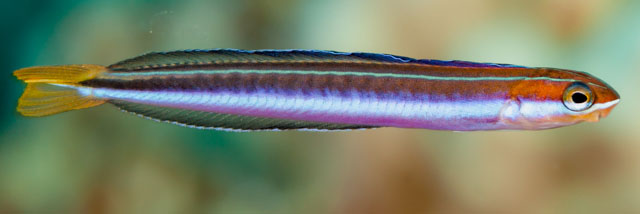| Blenniidae (Combtooth blennies), subfamily: Blenniinae |
| 6.35 cm SL (male/unsexed) |
|
reef-associated; marine; depth range 1 - 15 m |
| Eastern Central Pacific: Hawaiian Islands. |
|
Dorsal spines (total): 11-12; Dorsal soft rays (total): 23-26; Anal spines: 3-3; Anal soft rays: 20-21 |
| Adults are benthic or benthopelagic in or over coral (Ref. 58302). Common from the shallow waters to about 15 m. Taken with rotenone at 3-5 feet along rocky seashores where there was some sand bottom and where water circulation was good. Some specimens were collected from the stomachs of large fish (e.g. yellowfin tuna, Neothunnus macropterus) and from dolphins (Coryphaena hippurus) (Ref. 643). Oviparous. Eggs are demersal and adhesive (Ref. 205), and are attached to the substrate via a filamentous, adhesive pad or pedestal (Ref. 94114). Larvae are planktonic, often found in shallow, coastal waters (Ref. 94114). |
|
Least Concern (LC); Date assessed: 27 March 2009 Ref. (130435)
|
| harmless |
Source and more info: www.fishbase.org. For personal, classroom, and other internal use only. Not for publication.

